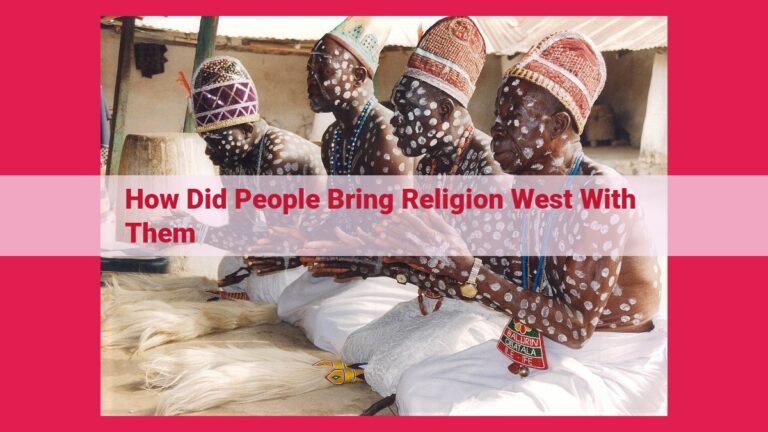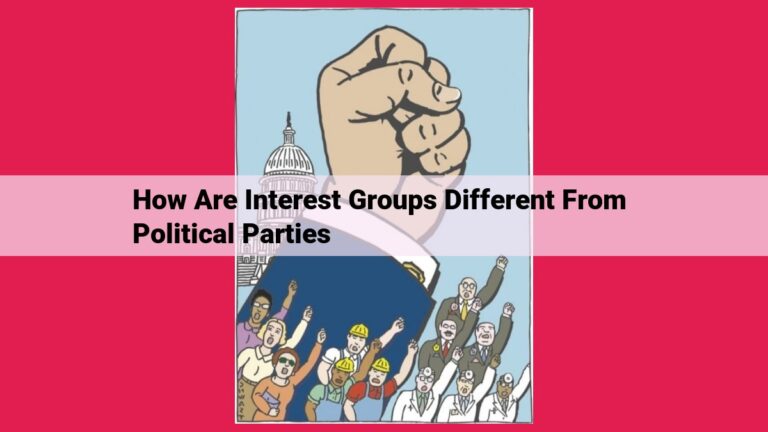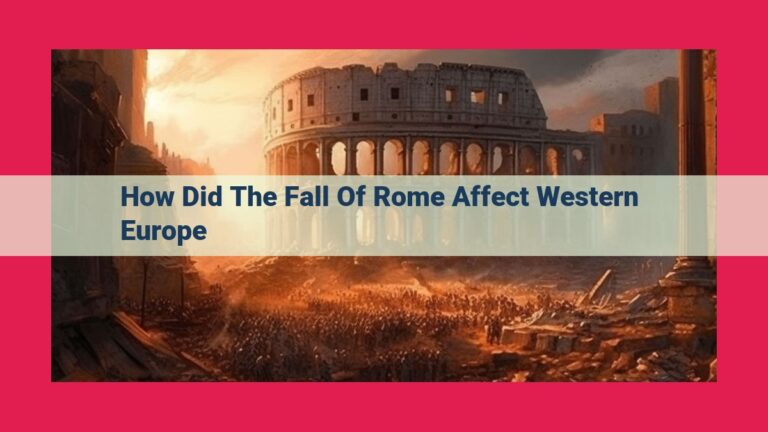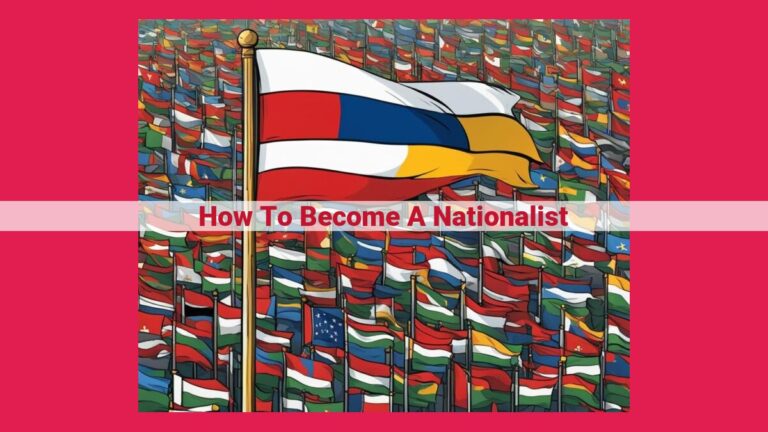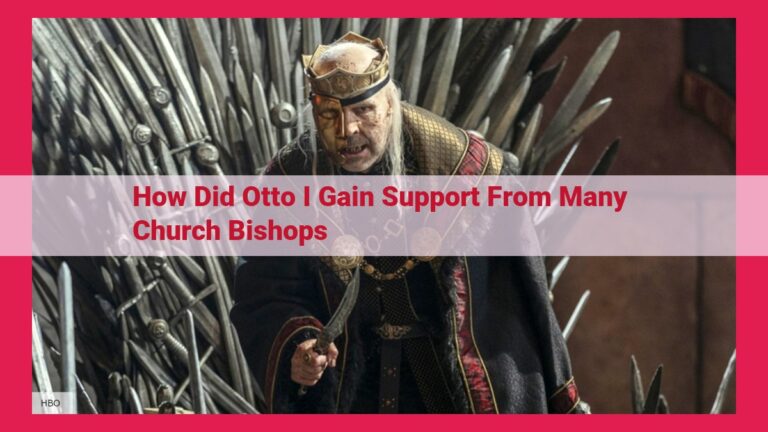The Church’s Ascendency: Social, Economic, And Political Power In The Middle Ages
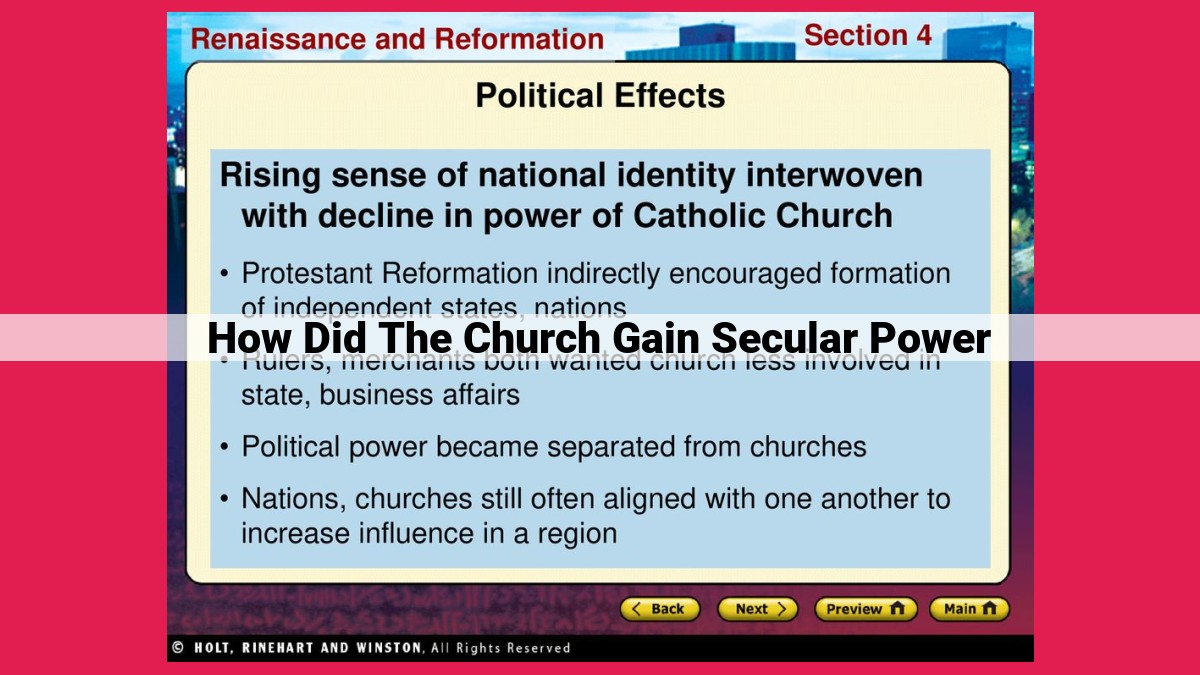
Through the skillful use of patronage networks, the threat of excommunication, and control over religious rituals (interdict), the Church wielded immense social power. Its tax collection and substantial landownership further solidified its financial and economic dominance. By supporting military conflicts and engaging in diplomacy, the Church extended its influence beyond religious matters, becoming a major player in secular affairs.
Patronage: The Power of Relationships in Medieval Society
In the tapestry of medieval life, patronage was an intricate thread that wove together the fabric of power and influence. It was not merely a social phenomenon but a pillar of the social hierarchy, shaping the destinies of individuals and their communities.
At its core, patronage was a relationship of reciprocity between two parties: the patron and the client. The patron, typically a wealthy and powerful individual, extended favors and protection to the client, who in turn provided loyalty and support.
This asymmetrical relationship created a hierarchy of obligations and benefits, with patrons exercising considerable influence over their clients. Through this web of relationships, patrons could amass political power, control resources, and shape the course of events.
For clients, patronage offered opportunities for advancement and protection in a society where resources were scarce and life was often precarious. By aligning themselves with powerful patrons, clients could gain access to land, wealth, and status, as well as protection from their rivals.
In return for their support, clients were expected to demonstrate unwavering loyalty and obedience to their patrons. They would often perform tasks and provide assistance, ranging from political lobbying to military service.
Patronage, therefore, was a complex system of social exchange that served as a key mechanism for maintaining order and stability in medieval society. It reinforced the existing power structures and provided individuals with a means to navigate the treacherous waters of the time.
Excommunication: The Ultimate Punishment
In the tapestry of medieval society, the Church wielded immense power, not only over matters of faith but also over the lives of its adherents. One of the most potent weapons in its arsenal was excommunication, a punishment reserved for those deemed the most grievous of sinners.
Different Types of Excommunication
Excommunication came in various forms, each with its own degree of severity. The minor excommunication barred individuals from receiving sacraments, such as communion or baptism. It served as a warning, giving the offender an opportunity to repent and seek reconciliation.
More severe was the major excommunication, which completely cut off the individual from the Church community. Not only were they denied sacraments, but they were also shunned by their fellow Christians. They could not legally witness documents, and their marriages were considered invalid.
Significance as a Means of Social Control
Excommunication was a powerful tool of social control. It not only severed the offender’s ties to the Church but also excluded them from society at large. They became pariahs, feared and avoided by their neighbors. This ostracism forced individuals to conform to Church teachings or face severe consequences.
Importance of Reconciliation
Despite its severity, excommunication was not intended as a permanent punishment. It was an opportunity for repentance and reconciliation. If the excommunicated individual showed sincere remorse and made amends, they could be readmitted into the Church community. This process often involved public penance and a period of supervised probation.
Examples of Excommunication
Throughout history, excommunication has been used against a wide range of individuals, from emperors and popes to heretics and rebels. The most famous example is perhaps Henry VIII of England, who was excommunicated by the Pope in 1533 after declaring himself head of the Church in England.
Excommunication was a powerful and feared punishment in medieval society. It served as a means of social control, ostracizing individuals from both the Church and society. However, it also offered a path to repentance and reconciliation, allowing sinners to return to the fold.
Interdict: Suspending the Sacred
In the medieval world, the Church wielded immense power, not only over spiritual matters but also over daily life. One of the most potent weapons in its arsenal was the interdict, a severe ecclesiastical penalty that could bring entire communities to their knees.
Forms of Interdict
Interdicts came in various forms, each with its own gravity:
- Local Interdict: Confined to a specific region or community, it prohibited religious services, including baptisms, marriages, and funerals. Only the sick and dying received last rites.
- General Interdict: Applied to an entire country or region, it suspended all religious ceremonies, even for the dying.
- Personal Interdict: Targeted an individual who had committed a grievous offense. It forbade them from receiving sacraments or participating in religious life.
Impact on Religious Life
The impact of an interdict could be devastating. Religious life was central to medieval society, and its suspension deprived people of spiritual comfort and guidance. Marriages became invalid, and children died unbaptized. The dead were buried without the prayers and blessings of the Church.
Impact on Community Activities
Interdicts also disrupted daily life. As religious gatherings were forbidden, it put a halt to festivals, fairs, and other social events. The economy suffered as commerce slowed and work was disrupted. The lack of religious services had a profound psychological impact on the people, leading to anxiety and despair.
Types of Violations
Interdicts were typically imposed for grave offenses against the Church, such as heresy, murder of a cleric, or violation of ecclesiastical law. However, they were sometimes used as a political weapon, wielded by the Pope to punish unruly rulers or force them into submission.
Lifting the Interdict
Lifting an interdict required the offender to make amends and perform penance. The Pope could also grant absolution if the offender showed sincere repentance. However, interdicts could sometimes last for years, leaving a lasting scar on the community.
The interdict was a powerful tool that the medieval Church used to maintain its authority and enforce its will. By suspending the sacred, it could bring even the most recalcitrant to heel. The devastating impact on religious life, community activities, and individual well-being made it a formidable weapon, to be used only in the most extreme circumstances.
Taxation: The Price of Piety
In the Middle Ages, the Church played an influential role not only in spiritual matters but also in financial affairs. One of the ways it exercised its power was through taxation, a system that significantly impacted the everyday lives of its members.
Methods of Taxation
The Church employed various methods of taxation to raise funds for its operations and support its growing influence. These methods included:
- Tithes: A form of obligatory payment, where members donated a tenth of their agricultural produce, livestock, or other income to the Church. This was the most common and widespread method of taxation.
- Peter’s Pence: An annual tax collected from each household in support of the Pope’s authority and the upkeep of the Vatican.
- Annates: A fee paid by newly appointed bishops upon their confirmation, amounting to a year’s worth of their income.
- Dispensation Fees: Payments required for obtaining exemptions from Church rules or prohibitions, such as dispensations to marry during Lent or to eat meat on fasting days.
- Indulgences: Fees paid in exchange for the remission of sins, a practice that became controversial in later years.
Financial Implications
The Church’s taxation system had significant financial implications for its members. For many peasants and small landowners, tithes and other levies represented a substantial burden. These payments could often leave them struggling to provide for themselves and their families.
The higher clergy, on the other hand, benefited greatly from taxation. The revenue generated from tithes and other sources allowed them to live in luxury and support an extensive network of churches and monasteries. This wealth also played a role in strengthening the Church’s political and social influence.
Over time, the Church’s heavy-handed taxation practices led to resentment and criticism. This resentment would eventually contribute to the Protestant Reformation, a movement that challenged the Church’s authority and its financial practices.
Landownership: The Bedrock of Medieval Wealth and Power
In the intricate tapestry of medieval society, landownership held sway as the cornerstone of wealth and influence. Manors emerged as microcosms of feudalism, their vast estates encompassing the lives and livelihoods of countless serfs.
Agriculture was the lifeblood of the manor, providing sustenance for its inhabitants and generating surplus that fueled the economic hierarchy. Those who owned the most land commanded the greatest power, able to extract labor, taxes, and fealty from their dependent tenants.
Nobility and the Church were the largest landowners, amassing vast tracts of land through inheritance, conquest, and donations. They established fiefs as a reward for military service, creating a network of loyal vassals who swore allegiance and provided armed support.
The serf class, bound to the land, toiled tirelessly to cultivate the soil and provide for their feudal lords. Their lives were often harsh and their status unchanging, but their labor formed the foundation of the entire feudal system.
Manors also played a crucial role in shaping medieval society. They were self-contained communities, complete with churches, mills, and workshops. Village life revolved around the manor and its lord, who dispensed justice, collected taxes, and provided protection.
Ultimately, landownership in the Middle Ages was a testament to the importance of control, both economic and social. Those who owned the land held the keys to wealth, power, and influence, while those who worked the land remained at the mercy of their feudal overlords.
Military Support: The Church’s Sword
The Church, often perceived as a bastion of peace and piety, has played a significant role in shaping the military landscape throughout history. From the thunderous clashes of the Crusades to the subtle machinations of covert diplomacy, the Church has wielded military power as a tool to protect its interests, project its authority, and influence the course of world events.
The Crusades: Holy War and Conquest
The Crusades, a series of religious wars sanctioned by the Church, stand as a testament to the military might of the medieval Church. Driven by a desire to liberate the Holy Land from Muslim control, Christian knights spearheaded these expeditions, spurred on by the promise of papal indulgences and the allure of plunder. The Crusades brought unprecedented violence and bloodshed to the Middle East, reshaping political boundaries and leaving an enduring legacy of conflict.
Mercenary Armies: Swords for Hire
In addition to organizing crusades, the Church also employed mercenary armies to bolster its military capabilities. These professional soldiers, motivated by financial gain and a thirst for adventure, played a crucial role in defending papal territories and suppressing internal dissent. The Church’s willingness to engage in mercenary warfare demonstrated the pragmatic nature of its military ambitions.
Diplomatic Influence: Swords and Words
While direct military intervention was often a last resort, the Church also wielded diplomatic power to achieve its goals. Through papal legates and nuncios, the Church maintained diplomatic ties with foreign rulers, mediating conflicts, forging alliances, and shaping international relations. The Vatican’s diplomatic prowess allowed it to exert influence far beyond its geographical boundaries, making it a formidable player on the global stage.
The Church’s military support was a complex and multifaceted phenomenon that played a pivotal role in shaping medieval Europe and beyond. From the fervor of the Crusades to the calculated use of mercenary armies, the Church’s involvement in military conflicts demonstrated the interplay between spiritual and temporal power. Understanding the Church’s military involvement sheds light on the intricate dynamics that have shaped the course of history.
Diplomacy: The Vatican’s Influence Beyond Borders
Throughout history, the Vatican has played a pivotal role in shaping international affairs through its extensive diplomatic network. The Holy See, as the central governing body of the Catholic Church, has established diplomatic relations with over 180 countries worldwide.
Papal Legates and Nuncios: The Vatican’s Ambassadors
The Vatican’s diplomatic reach extends beyond its walls through two key figures: papal legates and nuncios. Papal legates are special envoys of the pope sent to represent him at important events or to negotiate with governments. Nuncios, on the other hand, are permanent diplomatic representatives who reside in various countries to maintain relations and facilitate dialogue.
The Vatican’s Diplomatic Activities
The Vatican’s diplomatic efforts encompass a wide range of issues, including:
- Peacemaking and conflict resolution: The Holy See has often acted as a mediator in international conflicts, using its influence to promote dialogue and reconciliation.
- Human rights and social justice: The Vatican advocates for the protection of human rights, the eradication of poverty, and the promotion of social justice worldwide.
- Interfaith dialogue: The Vatican fosters dialogue with other religions and cultures to promote understanding and cooperation.
The Vatican’s Diplomatic Impact
The Vatican’s diplomatic initiatives have had a significant impact on global affairs. For example, in the 20th century, Pope Pius XII used diplomacy to condemn the rise of Nazism and to appeal for peace during World War II. More recently, Pope Francis has used his diplomatic platform to raise awareness about climate change and to promote interfaith harmony.
The Vatican’s extensive diplomatic network has enabled it to play a crucial role in shaping international affairs. Through its papal legates and nuncios, the Holy See has been a voice for peace, justice, and dialogue, making a significant contribution to the global community.
